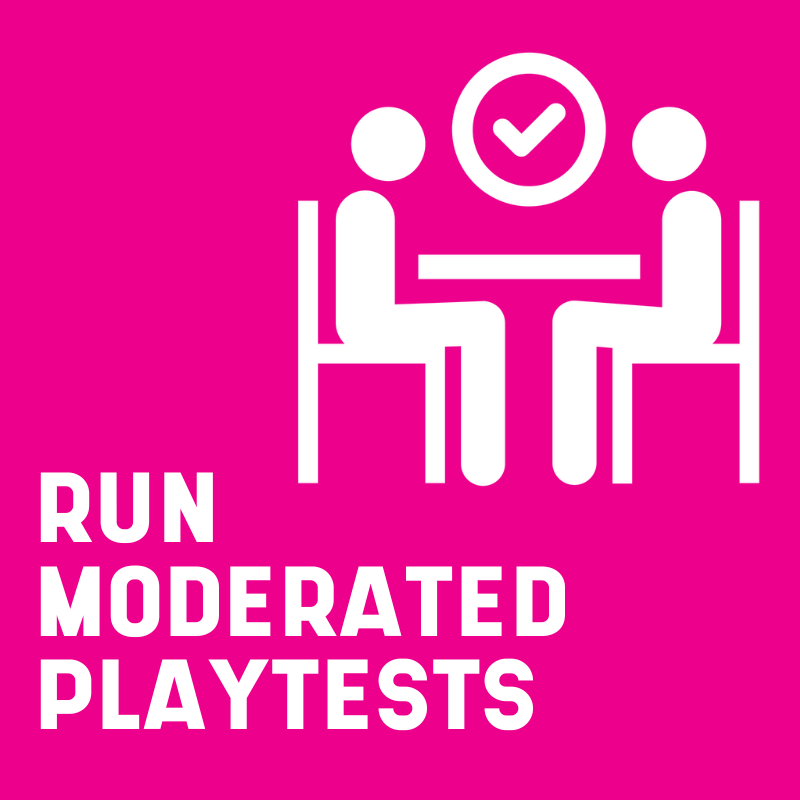Taking game development seriously costs money. Yes, there are occasional breakout hits – like Vampire Survivor’s massive success after being picked up by streamers – but the vast majority of successful games are made by studios that are investing a lot of time and money into making sure their games reach their potential.
User research is no exception to this – it’s a powerful tool to de-risk game development, but it’s not cheap, and taking it seriously will become an important part of budgeting for game development.
Despite fancy consultancies that show a huge return on investment for UX and user research, it’s still often forgotten from the development budget. And since the impact of ‘poor experience’ isn’t felt until launch, the cost of cutting user research is invisible during development, and easy to deprioritise.
Changing a culture can take a long time. But one tool is knowing the appropriate amount to budget for user research and playtesting, to deliver a successful game.
In this article, I wanted to cover how much is appropriate to budget for user research, and how best to spend the budget you have to make sure your game will be successful.
How much does game development cost
In my playtest survey, when teams had a budget for playtesting, it was typically 1-5% of the total development budget.
So to work out an appropriate user research budget for your game, it’s important to start with your overall game budget. This can vary hugely between teams and genre (especially for mobile games, which can have lower development costs, but need to invest more in marketing costs).
I’ve given a rough outline of game budgets based on an article from Auroch Digital, received wisdom about budgeting between $10,000-$15,000 per staff member per month, and my experience interviewing developers – but figures will vary between studios.
Hobbyist developers
There are a large amount of people who are making games for fun, rather than as a career, and that’s to be celebrated.
Their budget is tiny – if they have one at all, and they are not reasonably expecting to make a financial return on their game. This practically means no budget is dedicated for user research or playtesting.
Smaller Indie Titles
Many indie publishers expect development budgets to cost between $250k to $500k for the teams they support, which would typically fund a small team of one to five developers working for two years. This can still be a very tight development budget – the team working on Shovel Knight ended up having to work for months without pay, and borrowing from friends and family to finish the game within the $300,000 they’d raised from Kickstarter.
Taking our 1-5% benchmark for user research spending, that means they have between $2,500 and $25,000 to spend on user research or playtesting.
Larger Indie Titles
Auroch Digital (and Wikipedia) distinguish between smaller indie titles, and ones that attempt to combine an indie level of creativity, with a higher budget and scope than other indie games. Examples of games in this bracket covered in GameIndustry.biz include Ancestors: The Humankind Odyssey, Hellblade: Senua’s Sacrifice, and The Witness – made on budgets of up to $10 million.
This gives us a huge range of potential research budgets, from $10,000 to $500,000. This allows teams to run multiple rounds of research, and focus on testing their core concepts, alongside later usability and balance testing.
AAA Games
Most mainstream console and PC games end up being classed as ‘Triple-A’. Triple-A budgets start at $10,000,000 but can be many times that – in the recent Microsoft/Activision acquisition, reports came out that AAA games aiming for a potential release in 2024 and 2025 received an average development budget of $200 million.
For titles aiming for mainstream success, de-risking development through research becomes increasingly important – it’s a lot of money to waste if the game fails to successfully convey its vision to players!
This means you can expect research budgets to start at $500,000, and to increase rapidly from there – starting to allow teams to unlock iterative research throughout development. At the top end of AAA budgets, the publishers can support large research teams and build bespoke labs – with millions of dollars available for their research roadmap.
How much does games user research cost?
User research capability can be built in-house, or research projects can be outsourced to a consultant or agency.
For an in-house research team, there will be some headcount costs (which once again can be estimated at $10,000-15,000 per person per month, once all of the overheads are accounted for). There will also be the cost of building a user research lab. I’ve previously written some guidance on lab design at different budgets, but a workable lab can be built for $10,000 (although lab costs can quickly scale up to millions as the technical complexity of your requirements develop).
The biggest outgoing cost is likely to be participant recruitment, which can cost between $50-$100 per participant. The scope of your study will impact how many participants are required, but a typical study could end up being anywhere between $400 and $5000.
In contrast, an agency’s costs will differ radically based on their location and size, and the scope of the study but some example costs for a complete study could be:
$5,000 – $10,000 for a usability heuristic review
$10,000 – $15,000 for an unmoderated test
$15,000 – $30,000 for a moderated test
$30,000 – $50,000 for a large quantitative study
With the cost rising more for complex recruits, mixed methods or extensive benchmarking.
Using a solo consultant rather than an agency will bring the costs down a little bit because they have fewer overheads – but at the expense of capacity (they are more likely to be too busy to handle your project!).
What is the best use of my budget to de-risk launching my game
Well, that depends on your research budget…
Hobbyists, and studios with development budgets below $1,000,000
With a research budget of up to $25,000, it’s unlikely you can much outside support for running user research and playtesting, and will have to do it yourself – the budget will go a lot further if you do the legwork yourself, and spend the money you do have on outsourcing participant recruitment. This means you’ll be able to run multiple rounds of research, rather than outsourcing a single study at the end of development – when it’s likely too late to make substantial changes.
These budgets are what the Playtest Kit has been made for – to help teams run the best studies possible without having access to a dedicated UX research professional, on a limited budget. Learn more about the Playtest Kit.
Development budgets between $1,000,000 and $10,000,000
Research budgets of up to $500,000 means external research support becomes more possible. At the lower end of this budget range, it’s unlikely to be sensible to hire a dedicated UX research professional in-house, or build a research lab, but many teams benefit from hiring a consultant part-time to help them work out a research roadmap, and execute on it with external partners.
Studios with this size development budget often end up running external playtests at important milestones – putting a vertical slice in front of players, running deep usability tests during production, and some larger quantitative studies for balance towards the end of production.
Development budgets over $10,000,000
If you’re at a studio developing a AAA game, or work for a publisher supporting game development at this level, this is the time to start building out a research lab and team.
This will enable you to run a full spectrum of studies throughout development, including:
Ideation – Defining who your players are, understanding competitor games, and iterating on single interactions
Pre-Production – Testing the invidiual systems within a vertical slice, and validating the core loop works
Production – Frequent iterative studies focusing on usability, ensuring that the game is understandable and achieveable
Post Production – Balancing the overall experience, and identifying remaining pain points
Post Launch – Optimising retention, and informing the design of new content or games.
Deploying a full spectrum of research studies throughout development will help with confident prioritisation of game development tasks, more predictable development, and reduce crunch or re-work.
My 2020 book ‘Building User Research Teams’ gives an overview of the process for building a new team, or you can get in touch if you’d like support on that journey.
De-risking game development
Game development is a risky business, and user research offers a way to minimise that risk and unlock more confident, predictable development schedules. Regardless of your budget, the concept of exposing and validating your assumptions about player behaviour will help you make better game design decisions, and increase the odds that your game will be successful.
Integrate player insight throughout development
Every month, get sent the latest article on how to plan and run efficient high quality playtests to de-risk game development. And get Steve Bromley’s free course today on how to get your first 100 playtesters for teams without much budget or time.
Plus your free early-access copy of ‘Playtest Plus’ – the essential guide to the most impactful playtests to run throughout development of your game



